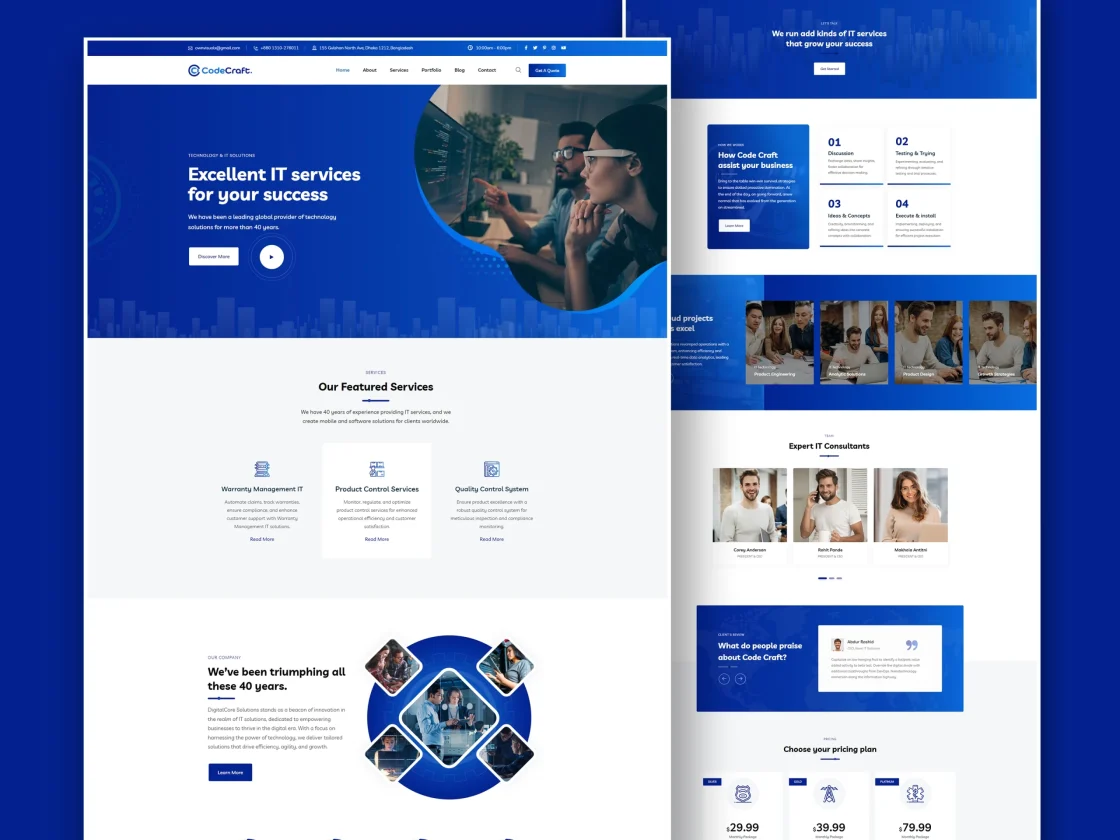- Home
- Web Design
- Bug Fixes
- Home
- Bug Fixes
Website Bug Fixes
The “Bug Fixes” service involves identifying, addressing, and resolving issues or bugs within software applications, websites, or other digital products. Bugs are unintended errors or flaws in the code that can cause malfunctions, unexpected behavior, or usability issues. Bug fixes are crucial for maintaining the functionality, performance, and security of digital products. Here’s an overview of what the “Bug Fixes” service typically entails:
Key Features:
Bug Identification:
- The process begins with identifying and categorizing bugs. This may involve user-reported issues, internal testing, or monitoring system logs for anomalies.
Bug Tracking:
- Bug tracking tools are often used to log and manage identified issues. These tools help prioritize bugs, assign them to specific team members, and track the progress of bug fixes.
Prioritization:
- Bugs are prioritized based on their severity and impact on the product. Critical issues affecting functionality, security, or user experience are typically addressed with higher priority.
Root Cause Analysis:
- Developers conduct a thorough analysis to understand the root cause of each bug. This involves reviewing code, examining system logs, and, if necessary, replicating the issue in a controlled environment.
Fix Implementation:
- Once the root cause is identified, developers proceed to implement the necessary fixes. This may involve modifying code, updating dependencies, or addressing data-related issues.
Testing:
- After implementing fixes, thorough testing is conducted to ensure that the bug has been successfully addressed without introducing new issues. This includes unit testing, integration testing, and, in some cases, user acceptance testing.
Quality Assurance:
- QA teams play a crucial role in the bug-fixing process. They verify that the fixes meet the specified requirements, and they often perform additional testing to catch any regressions or unintended consequences.
Documentation:
- Documentation is updated to reflect the changes made during the bug-fixing process. This includes updating release notes, documenting the fixed issues, and providing any relevant information for users or other team members.
Release Management:
- Depending on the development process, bug fixes may be bundled and released in a scheduled update or patch. Release management ensures a smooth deployment of bug fixes without disrupting the overall product.
Communication:
- Clear communication is essential throughout the bug-fixing process. Stakeholders, including users, may be informed about the status of identified bugs, the timeline for fixes, and any necessary actions on their part.
Continuous Monitoring:
- Even after bug fixes are implemented and released, continuous monitoring of the system is essential. This helps identify any new issues that may arise as a result of the fixes or due to other factors.
Post-Implementation Support:
- Bug fixes may lead to additional user inquiries or issues. Providing post-implementation support ensures that users receive assistance and that any newly identified problems are addressed promptly.
The “Bug Fixes” service is an ongoing aspect of software development and maintenance. Regular bug fixing is essential for delivering a reliable and user-friendly digital product. It contributes to the overall quality and performance of the software, enhancing user satisfaction and trust in the product.
FAQ
Get Every Answers
A website bug is an error or glitch in the code that affects the normal functioning of your website. It can manifest as broken links, display issues, or functionality problems. Bugs can disrupt user experience, potentially leading to decreased visitor satisfaction and engagement.
Common signs of a website bug include broken links, missing images, incorrect page rendering, or unexpected errors. Regularly monitoring your website, gathering user feedback, and conducting thorough testing can help identify and address bugs promptly.
Timely bug fixes are essential to maintain a positive user experience. Website bugs can deter visitors, harm your brand reputation, and negatively impact search engine rankings. Quick resolutions help ensure smooth website performance and user satisfaction.
The timeframe for fixing a website bug varies based on its complexity and impact. Critical issues are usually addressed with higher priority. Your web developer or support team can provide an estimated timeline for bug resolution.





